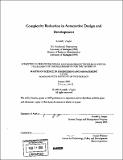Complexity reduction in automotive design and development
Author(s)
Ziegler, Ronald J., 1965-
DownloadFull printable version (9.642Mb)
Other Contributors
System Design and Management Program.
Advisor
Daniel Whitney.
Terms of use
Metadata
Show full item recordAbstract
Automobiles are complex products. High product complexity drives high levels of design and process complexity and complicatedness. This thesis attempts to reduce complicatedness in the automotive vehicle design and development process utilizing systems engineering tools including the design structure matrix (DSM) and axiomatic design concepts. The title of the thesis is a misnomer; complexity in automotive design and development is not "going away", but through the use of system engineering tools it is believed that the complicatedness of automotive design can be reduced and the consequences of decisions can be better understood at earlier stages in product development. A holistic view of the complexity and complicatedness challenge is considered, in order to identify high leverage points and generic insights that can be carried forward to future product development efforts. The goal is to translate generalized learning and systems thinking to the application of systems tools and processes that enable an understanding of complexity, in order to design better operating policies that guide positive change in systems. The analysis starts with considerations across the automotive enterprise, then the focus sharpens to the early stages of the product development process. Then a more detailed level of abstraction is considered when the automotive chassis tuning process and the interactions between the vehicle dynamics and noise and vibration (NVH) attributes are considered. The automotive rear suspension design is used to illustrate the concepts at the detailed level of abstraction. A rear suspension system case study is included, as it met a number of the challenges inherent in large-scale systems; it provides the elements of a technical challenge (cont.) and the integration of business and engineering issues, while encompassing detailed and broad issues that across different parts of the organization. The analysis demonstrates that the complicatedness of systems can be reduced and complexity can be managed through the use of the design structure matrix and axiomatic design concepts. Recommendations are made to foster improved decision-making that will result in improved automobiles and include the following: start simply with the application of these concepts on the critical few interactions that drive system performance, manage information explicitly, account and provision for risks in the development process, and reduce complexity and complicatedness through reuse.
Description
Thesis (S.M.)--Massachusetts Institute of Technology, System Design & Management Program, 2005. Includes bibliographical references (p. 117-118).
Date issued
2005Department
System Design and Management Program.Publisher
Massachusetts Institute of Technology
Keywords
System Design and Management Program.